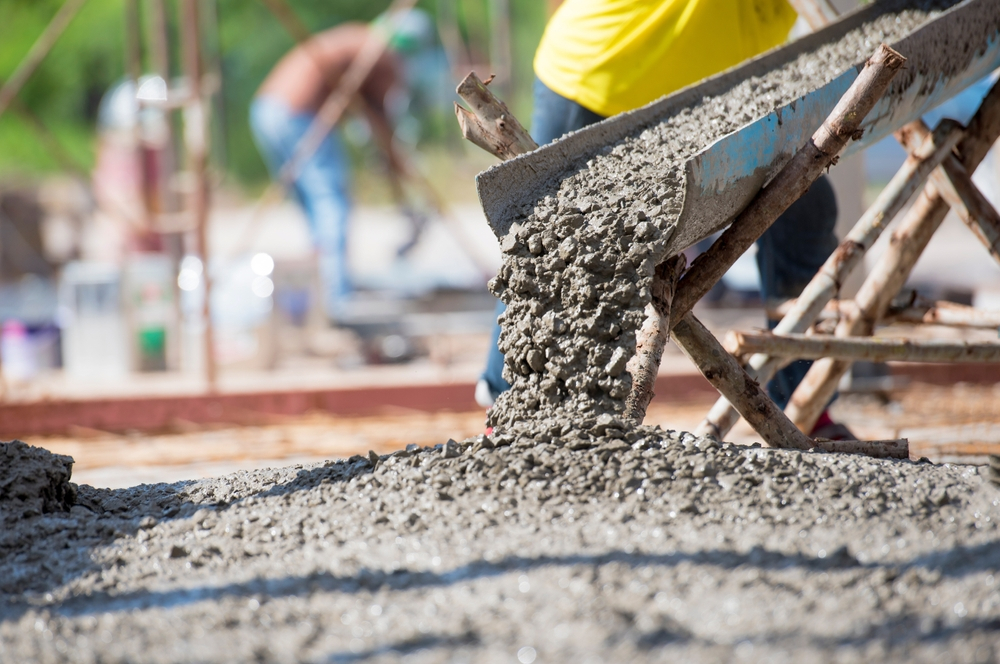How is concrete made
Introduced for the first time around 6500 BC, concrete is one of the oldest construction materials that we still use to this day. And it's for a good reason, as it's simple to make from abundant resources, it got really cheap and it's strong and durable.
But it also comes with a high carbon footprint associated with it. Cement, one of the core materials that goes into concrete, has a 1:1 carbon footprint associated with production, meaning that for each kilogram of manufactured cement, we release around one kilogram of CO2 emissions. That's why cement and concrete are responsible for 9% of the planet's total carbon footprint.
So, cement is one of the ingredients that go into making concrete. Concrete is used nowadays when building different constructions, such as foundations, roads, parking lots and even the exterior walls of some of our buildings.
How is concrete recycled
Concrete can be recycled and repurposed in many ways, but there are a few that we should avoid to make sure that it stays in the economy for as long as possible. For example, the material can be used for making roads or foundations, but these scenarios should be avoided where possible, since this will prevent us from being able to recycle it afterwards. Instead, demolition concrete can be used in new constructions or in refurbishment projects, which will prolong its lifespan and prevent it from becoming polluting waste.
One of the most common methods to recycle dry and hardened concrete is to crush it and usually, construction companies place sorters and crushers on-site to allow local recycling. Ideally, however, is for the company to take the concrete to a specialized facility, which has more performant machinery that is able to generate a higher-quality product.

The more contaminants concrete has, the more difficult it is to recycle it. For reinforced concrete, which contains steel bars to make it stronger, separation is simpler, due to the fact that the bars can be easily identified and removed from the concrete.
Sometimes, only 30% of the concrete found within a building is being recycled, in order to preserve the overall performance of the material. But improved chemical techniques allow for easier and more efficient separation of the ingredients, which enables to capture 60 kg of emissions per ton of recycled concrete.
After separating the contaminants from the concrete, the material can be implemented into new concrete mixes in a certain share, so that the carbon footprint of a future construction is reduced, while its overall performance doesn't suffer to cause a catastrophic collapse.
Benefits of recycling concrete
For once, recycling concrete helps reducing waste in the construction industry, which is good on the perspective that less waste means less landfill stream, while also reducing the costs of disposing of the construction material.
This goes hand in hand with processing demolition concrete on-site, as it further reduces the costs associated with transporting the material to recycling centers and back to construction companies.
Implementing recycled concrete can also help a building earn LEED certification points and can be a sustainability advantage for its upcoming operator coming from the use of recycled materials that help dramatically reduce the construction's carbon footprint.

Another benefit is reducing the strain on the natural resources, which are becoming more difficult to find as we continue to expand and build at accelerated rates.
Recycled concrete, just like traditional concrete, can be used to make new buildings, bridges, dams and tunnels and luckily for us, it can have a circular lifecycle in our economy, with recycling processes already in place for companies to take advantage of.
Reusing concrete over making new material can help us achieve great CO2 reduction, by lowering transport-related costs and emissions, foster recycling and recirculating existing quality materials, as well as reducing landfill waste. Repurposing even 10% of the concrete we use annually could help us reduce construction-related carbon emissions by around 300 million tons of CO2.
 Mihai - Cristian Ioniță
Mihai - Cristian Ioniță












Any thoughts?